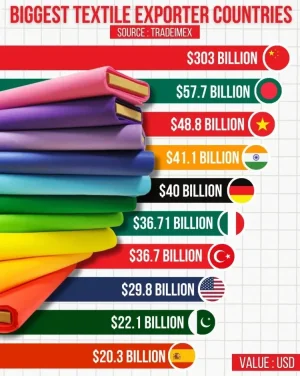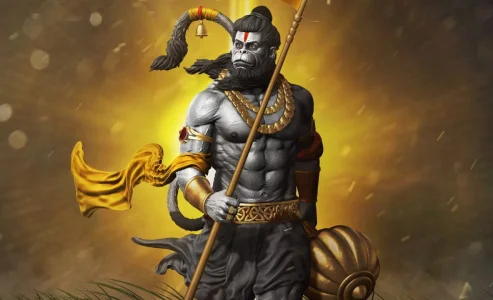Lu Xun has pointed out in his ABrief History of Chinese Fiction that “Since the Wei (386-534) and Jin (266-420) dynasties, with the gradual translation of Buddhist sutras, Tianzhu (Indian) fables also spread to China. The literati loved mysteries hidden in these tales and used them consciously or unconsciously in their writings, and these gradually became the Chinese products.” Nevertheless, no matter how Sincized they became, like other images such as Vimalakirti, Avalokitesvara, and Maudgalyayana, the Indian blood in them remains irrefutable. In the line of these images, the image of Tang Seng (Xuan Zang) and Sun Wukong (the monkey king) in the Ming Dynasty (1368-1644) vintage novel, Journey to the West remains one of the most popular images in China.
The story of the Journey to the West is based on Xuan Zang’s epic pilgrimage to India in search of Buddhist Sutras, however, the main protagonist in the novel is Sun Wukong, who saves the scholar monk from various dangers throughout his journey. It was Lu Xun who initiated the debate about the origins of Sun Wukong, and the debate has continued till date. Lu Xun believed that Sun Wukong evolved from a water goblin (Huai river monster, Wu Zhiqi) in Chinese mythology. In his A Brief History of Chinese Fiction, he says, “Since the Song and Yuan dynasties, the saying has been widely circulated amongst the people and scholars…it was not until the Ming vintage Journey to the West by Wu Cheng’en that this supernatural image was transformed into a fast-moving figure in the form of Sun Wukong, as a result, the water goblin mythology was completely buried.” Soon after Lu Xun’s proposition, in 1923, Hu Shi in his textual research on the Journey to the West refuted Lu Xun’s point of view and said that “I have always suspected that this magical monkey is not a domestic product, but an Indian import. Perhaps even the myth Wu Zhiqi is also created and influenced by India…. Therefore, I rely on the guidance of Dr. Baror A. von Staël Holstein who argues that in Ramayana there is a Hanuman, which is probably the real image of the monkey king, Sun Wukong.”
Following these arguments, an intense debate followed in China on the identity of Sun Wukong. Cai Tieying, author of the Epiphany and Immortality: A Biography of Cheng’en has summarized this debate into following theories. The first is the “Local product theory” attributed to Lu Xun that primarily focuses on exploring the influence of China’s cultural traditions on Sun Wukong and refutes that Ramayana had influenced the formation of Sun Wukong. It is supported by scholars such as Wu Xiaoling, Liu Yuchen, Xiao Xiangkai and Li Guming etc. The second is the “Foreign import theory” attributed to Hu Shi, which draws parallels between the Journey to the West and the Ramayana, and looks for similarities in the characterization of Sun Wukong and Hanuman. Those who argue in this favour are, Zhao Guohua, Chen Shaojun, Lian Guangwen and others. The third is the “Hybrid theory” which argues that the image of Sun Wukong cannot exclude the local as well as foreign influence. The scholars who support such a view are Cai Guoliang and Xiao Bing etc. The fourth is the “Buddhist Canon theory” propounded by the Japanese scholars, who believe that Sun Wukong is mainly derived from the monkey-shaped gods in Buddhist scriptures as well as some of the disciples of Xuan Zang. There are not many responses from the mainland China scholars as regards this theory.
Of all these theories, the “Hybrid theory” has gained currency in China. Professor Yu Longyu posits in the Indian Classics and Chinese Texts: Indian Writers and Chinese Culture that Ji Xianlin is the most famous representative of the “Hybrid theory”. According to Ji, “We can’t refute the relationship between Sun Wukong and Nala and Hanuman of the Ramayana. However, at the same time, it cannot be denied that Chinese authors have further developed Sun Wukong, and have innovatively, combined the Indian monkeys with China’s Wu Zhiqi. With their powerful imagination and refinement, they have created the brave and bold, lively and artistic image of Sun Wukong, which is loved by the people.” Prof Yu has argued that if we look at Ji Xianlin’s works such as Ramayana: A Preliminary Study, it belongs to the “Foreign import theory” but is strikingly different from the one proposed by Hu Shi. However, on the whole, it belongs to the hybrid theory.
The latest masterpiece supporting the hybrid theory is Liu Anwu’s book Comparative Studies of Indian and Chinese Literature. After the three pillars (Jin Kemu, Xu Fancheng and Ji Xianlin) of Indian studies in China, Liu Anwu could be considered as the fourth pillar. He was also trained in Sanskrit and Hindi and has been regarded as an authority on Premchand studies in China. In the book, Prof Liu has dedicated two chapters titled “Rescuing the kidnapped wife: Rama’s story in the Journey to the West”, and “A Comparison of the Curse Mantra and otherMantras: Hindu Mythology and Journey to the West” to prove his point by referring to a mass of original sources. He has established that various descriptions of Sun Wukong in the Journey to the West are very consistent or similar to the Rama story in the Buddhist sutras and the great epic Ramayana itself. According to him, “When you look at these descriptions independently and individually, you don’t necessarily think that they are borrowed from somewhere, but believe that they are created in parallel. But seeing holistically, you will have the second thought about them.”
Professor Liu Anwu is of the view that the formation of the Journey to the West passed through several stages and saw versions such as Story of the Tripitaka Master Xuan Zang going on Pilgrimage for the Buddhist Sutras, Storytelling Text ofJourney to the West and Storytelling of Tripitaka Master Xuan Zang’s Journey to the West. Hence, Wu Cheng’en comprehensively polished and recreated the mythical novel Journey to the West. He undoubtedly epitomized the novel, but in addition, there are many unsung authors who were generally familiar with Buddhism and the pilgrimage story. As the Ramayana is a household name in India, those who had gone from China to India certainly must have heard this story, similarly the Indians who had come to China also must have told the story to their audience.
He argues that after the 7th century AD, Buddhism gradually declined in India and was almost extinct in the 13th century. What is disseminated
इस शब्द का अर्थ जानिये
to Southeast Asia is a mix of Buddhism and Indian culture. This situation will inevitably have its impact on the southeast coast of China, Buddhist and Indian temples in Quanzhou is its testimony. During the Tang, Song and Yuan dynasties, Guangzhou, Quanzhou, Mingzhou, Yangzhou were the world’s busiest international business hubs that were frequented by merchants, sailors, and monks from India and other parts of Asia. The story of Rama must have been the subject of their pastime; therefore, it was natural for the story including that of Hanuman to spread on the southeast coast of China. According to him, the Chinese people have always underscored the importance of textual tradition but ignored the oral tradition, therefore, must pay attention to the influence of oral tradition on the literature of southeast coast of China, and even need to study the spread of the Ramayana in Southeast Asia. For example, Ji Xianlin’s study of Ramayana’s circulation in China’s Dai nationality is constructed on the basis of oral tradition. He suggests Zhang Yu’an and Xiao Xiaorui’s The Story of Rama and Southeast Asian Literature, a book having more than 400,000 characters as a great reference book. Since Wu Cheng’en’s Journey to the West is in folk style, however, has undoubtedly turned the oral into textual literary form. In short, Sun Wukong is crystallization of the integration of Chinese and Indian literary images in the long process of cultural exchanges. It is a hybrid of the Chinese and Indian civilisations.
B.R. Deepak is Professor at the Center of Chinese and Southeast Asian Studies, Jawaharlal Nehru University.
This article has been compiled on the basis of author’s forthcoming translation of Yu Longyu and Liu Chaohua’s work titled “China and India: Dialogue of Civilizations.”

mexico.as.com

www.clusterindustrial.com.mx





